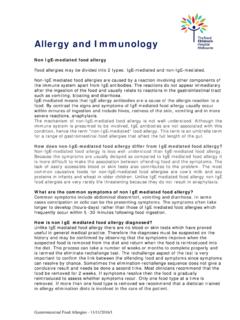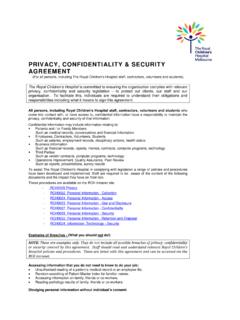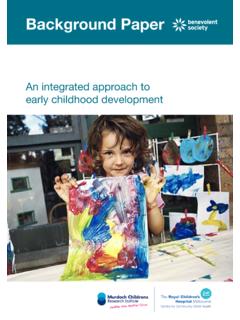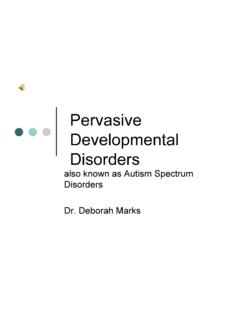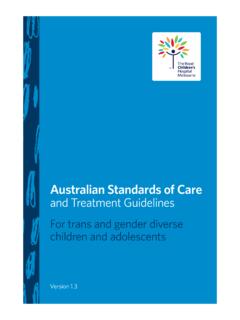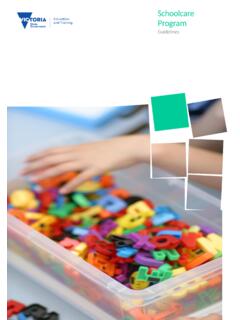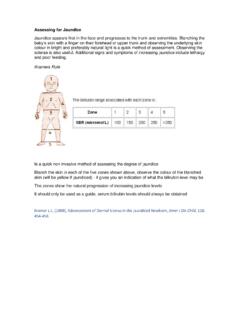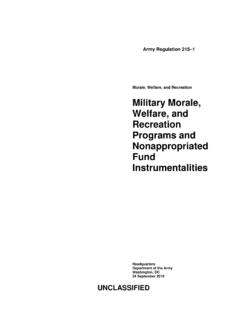Transcription of FRACP Intellectual disability talk.ppt
1 Intellectual DisabilityOutlinezDefinitionzDefinitionz Medical investigationCdzCommon syndromeszAssociated comorbidity and managementzEducational issueszMedication zTransition to adulthoodzTransition to adulthoodDefinitionzTerminology differs across WesternzTerminology differs across Western worldzAustralia Intellectual disabilityzAustralia Intellectual disabilityzUK learning disabilitieszUSA mental retardationCognitive FunctioningWHO 1968 WHO 1968zmild IDIQ50-55 to 70zmild ID IQ 5055 to 70zmoderate ID IQ 35-40 to 50-55 IDIQ2025 t 3540zsevere ID IQ 20-25 to 35-40 zprofound ID IQ below 20-25 Old terminologygyzidiot-profoundzidiotprofou ndzimbecile -moderate/severe fbl iddildzmoron or feeble minded-mildDefinitionzA significant impairment of cognitive andzA significant impairment of cognitive and adaptive functions, with age of onset before 18 yearsbefore 18 presentation is with impairments in adaptive functioningadaptive and ICD-10zDSM IVzDSM IVz dysfunction or impairment in >2 areas.
2 Communication, self-care, home living, social/interpersonal skills, use of community resources, self direction, functional academic skills, work, leisure , health and safety zonset before age 18gDSM-1V and ICD-10zICD10zICD-10z mental retardation is a condition of td ilt d lt farrested or incomplete development of the mind, which is especially characterised by impairment of skillscharacterised by impairment of skills manifested during the developmental period contributing to the overall level ofperiod, contributing to the overall level of intelligence- cognitive, language, motor and social abilities ClassificationzDSM IVzDSM IVzPublished 1995 text revision 2000zzvszDSM VSz10 years of revision due May 2013 DSM IVzMental RetardationzMental RetardationzA.
3 Significantly subaverage Intellectual functioning: an IQ of approximately 70 orfunctioning: an IQ of approximately 70 or below on an individually administered IQ test (for infants a clinical judgment oftest (for infants, a clinical judgment of significantly subaverage Intellectual functioning)functioning).DSM IVzB. Concurrent deficits or impairments inzB. Concurrent deficits or impairments in present adaptive functioning ( , the person's effectiveness in meeting the standards expected for his or her age by his or her cultural group) in at least two of the following itilfhliiareas: communication, selfcare, home living, social/interpersonal skills, use of community resources self-direction functional academicresources, self-direction, functional academic skills, work, leisure , health, and IVzC.
4 The onset is before age 18 based on degree of severity reflecting level of Intellectual impairment:z317 Mild Mental Retardation:IQ level 5055 toz317 Mild Mental Retardation: IQ level 50 55 to approximately Moderate Mental Retardation: IQ level 35 40 t5055to 50 Severe Mental Retardation: IQ level 20 25 to 35 Profound Mental Retardation: IQ level below 20 or 25 DSM VzIntellectual DisabilityzIntellectual DisabilityzA. Current Intellectual deficits of two or more standard deviations below the population ppmean, which generally translates into performance in the lowest 3% of a person s age and cultural group, or an IQ of 70 or below.
5 This should be measured with an individualized standardized culturallyindividualized, standardized, culturally appropriate, psychometrically sound concurrent deficits in at least concurrent deficits in at least two domains of adaptive functioning of at least two or more standard deviations, which generally translates into performance in the lowest 3 % of a person s age and cultural group, or tddf70 bl Thi hldbstandard scores of 70 or below. This should be measured with individualized, standardized, culturally appropriate psychometrically soundculturally appropriate, psychometrically sound measures.
6 Adaptive behavior domains typically include:ypyDSM VzConceptual skills (communicationzConceptual skills (communication, language, time, money, academic)zSocial skills (interpersonal skills socialzSocial skills (interpersonal skills, social responsibility, recreation , friendships)Pti l kill (d il li ikillkzPractical skills (daily living skills, work, travel).DSM VzCWith onset during the onset during the developmental no longer based on IQ levelAdaptive FunctioningpgzRefers to how effectively individualszRefers to how effectively individuals cope with everyday life demands, and how well they meet standards ofhow well they meet standards of personal independence expected of someone of that age and socioeconomicsomeone of that age and socioeconomic and cultural functioningpgzinfluenced by a number of factorszinfluenced by a number of factorszmotivationlitt lzpersonality stylezeducation.)))
7 Social and vocational opportunitieszgeneral medical conditions and mental gdisorders that co-exist with ID Measures of adaptive functioningpgzIs the instrument suitable to the ethniczIs the instrument suitable to the ethnic and cultural background?zVinelanduses a number of differentzVineland -uses a number of different sources to gauge adaptive functioning Frequencyqyzoccurs in 1-10 % of the population and iszoccurs in 110 % of the population and is most accurately diagnosed in the school yearsyears. zDevelopmental delay often used in preschool yearspreschool yearszsex ratio :1 M:Fzbiological inequity related to the sex chromosomes with the well established X- linked single gene mutationsFrequencyqyzIf we use the IQ construct then wezIf we use the IQ construct then we assume it is a normally distributed trait in the general population and therefore 2 %the general population and therefore 2 % of individuals would have an IQ less than studies report rates of thith IQ lth50 thzIn those with IQ s less than 50 the frequency is Intellectual disability is associatedzmild Intellectual disability is associated with low social class za much weaker association
8 Exists inza much weaker association exists in people with more severe IDAetiologygyzWHY INVESTIGATE?zWHY INVESTIGATE?z1. Diagnosis provides prediction2 Oftilht b th filz2. Often vigorously sought by the familyz3. Helps establish accurate recurrence riskWhy Investigate?ygz4 Prevents expensive unnecessary andz4. Prevents expensive unnecessary and invasive investigationsz5 Helps guide treatment andz5. Helps guide treatment and management Diagnostic yieldgyzsignificant improvement in yield over lastzsignificant improvement in yield over last 2 decadeszhigh frequency of the involvement ofzhigh frequency of the involvement of genes tit t t di i l d thhzmost important studies include thorough physical examinationzcytogenetics.
9 Neuroimaging and accurate EEG recordingAetiologygyzno longer true that the greatest yield is inzno longer true that the greatest yield is in those with more severe IDzdue to newer diagnostic techniques inzdue to newer diagnostic techniques in dysmorphology, cytogenetics and molecular genetics neuroimaging andmolecular genetics, neuroimaging and clinical neurophysiology yield is not dependent on degree of ID any longerdependent on degree of ID any longerHow to investigategzMost patients lack specific findings onzMost patients lack specific findings on history or examinationzGbanded chromosomes and singlezG-banded chromosomes and single gene disorders such as fragile XMicroarray testingygzMicroarray-based genomic copy numberzMicroarraybased genomic copy number analysis zOther names arezOther names arezChromosomal Microarray (CMA)
10 ZMolecular KaryotypingCMAzIncludeszIncludes bdtiizarray based comparative genomic hybridization (aCGH)zSingle nucleotide polymorphism (SNP)arraysCMAzG-banded karyotypezGbanded karyotype Cttiit i lidlzCytogeneticist visualizes and analyzes for chromosomal rearrangements ildiidlincluding gains and lossesCMAzNot standard in all clinical settingszNot standard in all clinical settingszInternational Standard Cytogenomic Array Consortium (ISCA)Array Consortium (ISCA)z10 clinicians, 17 clinical laboratory tiit 9i titdgeneticists, 9 genome scientists and bioinformatiticianszFocused on clinical application of CMA zAt present CMA is not recommended for prenatal testing although multicentreprenatal testing although multicentre studies are underway to look at this (Ql d RH t tb d t t dz(Queensland RH status can be detected by this technology))
